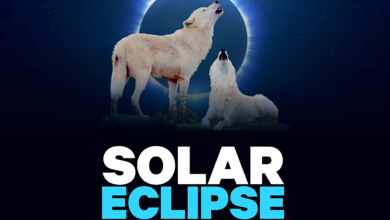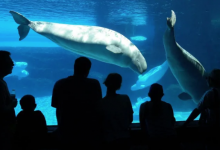David Saint-Jacques entering final stage of approach to Earth
When David Saint-Jacques returns Monday after six months in space, he’ll plummet back to Earth in what another Canadian astronaut remembers as a wild ride that felt like swinging on a pendulum out of control.
Shortly after 4 p.m. ET, Saint-Jacques, Russian Oleg Kononenko and American Anne McClain climbed out of the International Space Station (ISS) and closed the hatch on their Soyuz capsule.
The capsule undocked from the International Space Station on Monday evening and was set to arrive back on Earth at 10:48 p.m. ET, according to NASA.
Just before 10 p.m. ET, the space agency said, the capsule enters Earth’s upper atmosphere.
“It’s one of the most wildest, dynamic rides you can imagine,” said former Canadian astronaut Bob Thirsk, who made the trip back at the end of his ISS mission in 2009.
“One of my friends characterized it as: ‘Coming home in a Soyuz vehicle is like going over Niagara Falls in a barrel — but a barrel that’s on fire.’ ”
Thirsk has been keeping in touch with Saint-Jacques via email and said he has had a great mission.
“The re-entry is going to be the icing on the cake,” Thirsk told CBC News in an interview.
“It’s hard to believe. It’s been a very full mission,” he said Wednesday.
“I think it’s all going to feel like a dream. I am trying to burn it into my memory as best I can.”
On Sunday, Saint-Jacques tweeted: “BC and Nunavik… I will miss the view of these giant Canadian landscapes!”
By the time his descent module touches down on the vast steppe of central Kazakhstan late Monday night Canada time, Saint-Jacques will have set a new record for Canadian space endurance, spending 204 consecutive days in orbit.
That surpasses the previous record for the longest Canadian space flight, which was set by Thirsk, who spent 187 days on board the ISS.
Unlike new-generation space capsules, such as Space X’s Dragon and Boeing’s Starliner, Russia’s Soyuz program relies on 60-year-old technology to blast astronauts and cosmonauts into orbit and then return them to Earth.
Russia has flown more than 140 manned Soyuz missions and hasn’t had a re-entry accident since the early days of the program. Launch accidents have been rare as well, although Saint-Jacques’s mission had to be moved up several weeks after the previous Soyuz crew failed to reach orbit because of a booster rocket failure.
Thirsk said the return voyage starts to get interesting after the de-orbit burn, which propels the descent module into the Earth’s upper atmosphere.
Intense descent
“The G-forces will increase,” said Thirsk, recalling his own experience. “They will find it difficult to breathe. They will actually have to think of breathing to get enough air into their lungs.
“It will get up to about 4 Gs and that will be sustained for a couple of minutes.”
Thirsk said as the outside air gets thicker, the temperature on the surface of the capsule will rise and its heat shield will start to glow.
Then the first of the capsule’s parachutes deploys — the so-called drogue chute.
Thirsk said the immediate effect is that the capsule begins to swing back and forth.
“For me, it felt like the vehicle was at the end of a yo-yo string that was bouncing back and forth like a pendulum that was out of control.”
The main parachutes will deploy soon afterward and the capsule will take roughly 12 minutes to float down to Earth.
After touchdown, Thirsk said, he instantly felt the impact of six months of weightlessness on his body.
“I felt like a wet dishrag, even though I worked out religiously on board with the weight training.”
Thirsk said he was so weak he was unable to lift himself out of his seat and needed help from recovery crews who arrived about 20 minutes later.
Saint-Jacques said he’s anticipating it will take him several days to feel normal again.
“After six months in space without gravity, I’ve learned how to fly. Now I will have to learn how to walk properly again.”
While in space, Saint-Jacques celebrated his 49th birthday, became the fourth Canadian astronaut to take part in a spacewalk and stickhandled the arrival of Space X’s first unmanned capsule to the ISS.
Science experiments
The myriad of medical experiments he took part in included research into the effects of weightlessness on the human cardiovascular system and bone marrow, and the impact of extended weightlessness on bone structure.
Early in the mission, Saint-Jacques even managed to fix a leaking toilet in the U.S. portion of the ISS.
The Soyuz capsule carrying Saint-Jacques and the other astronauts back to Earth Monday will land in an area about 600 kilometres from the Kazak city of Karaganda.
Officials with Russia’s space agency Roscosmos, which is overseeing the mission, say once Saint-Jacques is out of the capsule, he’ll be examined by a Canadian doctor and within two hours, he will board a flight back to North America.
Saint-Jacques said he’s especially looking forward to seeing his wife, Véronique Morin, and his three children, and also going for a swim in his pool.
“It will remind me of floating in the space station.”








Redes Sociais - Comentários